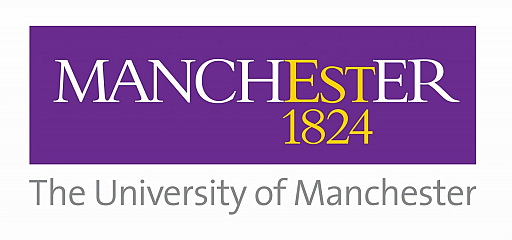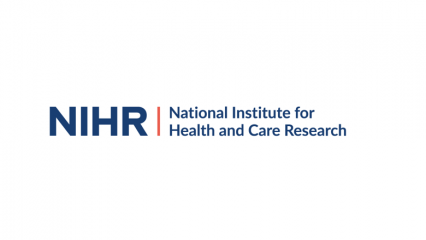Top 10 at 10 – Celebrating a decade of the NIHR
To commemorate the tenth anniversary of the National Institute for Health Research (NIHR) this year, our NIHR / Wellcome Trust Clinical Research Facility (CRF) is showcasing ten of its biggest research milestones.
Deputy Director of the CRF, Paul Brown said “The NIHR is celebrating its tenth birthday with a glittering showcase in London today involving Jeremy Hunt, Secretary of State for Health; George Freeman, Parliamentary Under Secretary of State for Life Sciences, and Professor Dame Sally Davies, Chief Medical Officer. It is also International Clinical Trials Day on Friday and so it seems a great opportunity for the CRF to look back on and commemorate 10 great success stories.”
In chronological order, here is a look back at 10 major highlights in clinical research at our Manchester CRF:
Professor Paulo Stanga, Director of the Manchester Vision Regeneration (MVR) Laboratory at the CRF, led a world-first study to implant blind patients with an artificial retina known as the ‘bionic eye.’
The device includes a tiny camera mounted on some dark glasses that transmits information to an electrode panel implanted in the eye. From there the data is sent along the optic nerve to the brain, allowing patients to see flashes of light.
Keith was one of three patients to be fitted with bionic eyes at Royal Manchester Eye Hospital, in partnership with the MVR Lab, in a trial for eye disease Retinitis Pigmentosa (RP) in 2009.
Keith said:
I have five grandchildren, whose faces I’ve never seen, but at least I can see them coming now!

Building on the success of the RP trial, the MVR Lab designed and is currently delivering the first study ever to combine artificial and natural vision in humans.
This feasibility study of revolutionary photosensitive implants will evaluate whether patients with dry Age-Related Macular Degeneration (AMD) can benefit from the bionic eye.
The difference between RP and dry AMD is that RP primarily affects the peripheral vision, whereas AMD affects the central vision. Retinal implants for individuals with AMD may restore some useful vision in their central visual field, which is non-functional due to the degeneration of photoreceptors. Dry AMD is a much more common disease than RP, affecting an estimated 20 to 25 million worldwide, compared with 1.5 million who have RP.
The results of this study could potentially widen the application of the bionic eye to other conditions, including earlier stage RP, and children with maculopathies and residual peripheral vision.
Professor Stanga partnered with Second Sight Medical Products Inc. (Second Sight) for the trial. He said at the time of the announcement: “This technology is revolutionary and changes patients’ lives – restoring some functional vision and helping them to live more independently.”
-
The CRF commemorates 100,000th participant study visit – November 2010
The CRF celebrated its 100,000th participant to visit the facility in 2010, since its opening nine years earlier.
The 100,000th participant was Ms Leslie Dickinson, taking part in a trial funded by the National Institutes of Health (USA).
Ms Dickinson said:
I just wanted to contribute to research for the future – more people, including me, will benefit from this work further down the line. I’d recommend it to anyone who gets the chance to participate in research studies.
The Wellcome Trust Children’s CRF at Royal Manchester Children’s Hospital enjoyed overwhelming success in its first year of operations (it opened in November 2009). The facility was the first of its kind in the North West and one of only a small number of dedicated paediatric research facilities across the UK.
Speaking at the ward’s first birthday party, director, Professor Nick Webb commented: “When the new Children’s Clinical Research Facility opened, we had high hopes for its success. The reality has far exceeded our expectations and in order to cope with demand we have doubled our nursing team from five to ten.”
The facility now has 20 dedicated staff members, over 60 studies underway and sees hundreds of patients each year.
It is currently undergoing a major revamp thanks to donations from Royal Manchester Children’s Hospital Charity. Patients, parents and students from local schools have been involved in the design process for the restoration project with a theme of ‘senses’ updating the wall art, furniture and equipment in the wards and treatment, parent’s, chill-out and play rooms.

-
Six first global recruits in a row for Children’s CRF – May 2011
The Children’s CRF achieved a major international milestone in May 2011 when it recruited the first patients in the world to take part in six separate drug trials.
Three new drugs were piloted with young kidney disease patients, while drugs for blood and metabolic disorders were also tested.
Since their openings in 2005 and 2009 retrospectively, the CRF and Children’s CRF combined have recruited 13 patients who were the first-in-the-world to take part in clinical research studies.
-
Clinical Research Facility (CRF) receives £5.5 million funding – March 2012
The CRF was one of three CRFs in Manchester to be awarded a share of £12.5 million pounds from the NIHR to carry out research into major diseases and illnesses.
The £5.5 million funding went towards supporting studies for people with diseases such as arthritis, psoriasis, depression, addiction, and diabetes.
Mike Deegan, Chief Executive of Central Manchester University Hospitals NHS Foundation Trust, said at the time: “Congratulations to the team on being awarded this funding to continue their excellent work in experimental medicine. This reinforces Manchester’s strong credentials in experimental medicine and will play a key role in constant improvements to treatment for our patients.”
-
New scanner to benefit patients across Manchester – December 2012
Patients across Manchester started to benefit from a new state-of-the-art MRI (magnetic resonance imaging) scanner at the CRF.
Funding from the Department of Health / NHS Capital Investment to the NIHR Manchester Musculoskeletal Biomedical Research Unit (BRU) and investment from The University of Manchester enabled the procurement of the Philips Achieva 3T MR System.
The scanner is fully equipped for state-of-the-art cardiac MRI, musculoskeletal MRI and multi-nuclear MR spectroscopy, which benefits a large number of researchers.

A Discovery Ball, in support of the Children’s CRF at Royal Manchester Children’s Hospital (RMCH) raised more than £130,000.
The event, organised by the RMCH Charity team, was hosted by broadcasting legends Richard and Judy and saw performances by Simply Red singer, Mick Hucknall; comedian, Dave Spikey and Hacienda DJ, Dave Haslam.
A host of celebrity guests turned out to support the event including Coronation Street stars Jennie McAlpine, Antony Cotton and Katie McGlynn and BAFTA winning actress, Suranne Jones.
Host Richard said:
This has been a totally phenomenal night and an absolute honour for Judy and I to be a part of it.
David Ray, Professor of Medicine and Endocrinology and Consultant at Manchester Royal Infirmary, was one of a number of researchers to feature in a BBC special about the circadian rhythm, called the BBC Day of the Body Clock.
The filming followed one of Professor Ray’s patients who had their activity and sleep tracked over a period of a week. The patient then took part in an overnight study visit at the CRF where nurses took the patient’s bloods every three hours. The bloods were analysed at The University of Manchester’s AV Hill building, to measure the activity of their immune system, and see how this changed by time of day.
The BBC special explored the ways in which the body clock affects our body and health, and how the latest research in shedding light on the role it plays in diseases and general health. The feature showcased Professor Ray’s research study, funded by the NIHR Manchester Musculoskeletal BRU, into understanding how biological clocks are affected by rheumatoid arthritis, and if this offers a way to improve treatment response, by altering the timing of treatment.
Coverage
BBC News clip
BBC News article
BBC Radio 5 Live – Shelagh Fogarty Show
BBC Radio 5 Live – Shelagh Fogarty Blog
BBC Radio 4 – World at One
Sixth Form students at Cheadle Hulme School started to contribute to vital research in experimental medicine as part of the public and patient involvement and engagement group at the CRF.
Two students who were undertaking their A Level examinations at the independent school, Tom Semple and Lizzy Wasson, were selected by CRF to add a young person’s perspective to the group, helping the facility to improve the patient and public’s experience of taking part in clinical research.

The group, which was set up and is managed with support from the Public Programmes team at Central Manchester University Hospitals, also includes representation from adult and children’s nurses, senior managers, administration and communication teams.
Deputy Head Girl and budding Paediatrician, Lizzy said at the time: “I felt that the group really valued our input and the alternative perspective we offered. It was great to be working so closely with doctors and nurses as well as getting the chance to look round the children’s research ward and see how play therapy is used with young people.”
Tom and Lizzy have since completed their A Level studies and have moved on from the independent school. Fellow Cheadle students, Hal and Becky are new members of the public and patient involvement and engagement group at the CRF.
-
CRF played key role in pioneering study that suggests screening for ovarian cancer may save lives – Dec 2015
Results from the world’s biggest ovarian cancer screening trial were announced and suggest that screening based on an annual blood test may help reduce the number of women dying from the disease by around 20%.
Over 16,500 women from Greater Manchester, representing the largest group in the North West, attended regular appointments and annual screenings at the CRF.
The research, published in the Lancet, also cautions that longer follow up is needed to establish more certain estimates of how many deaths from ovarian cancer could be prevented by screening. Estimates from the results so far are promising, but the exact figures remain uncertain.
The UK Collaborative Trial of Ovarian Cancer Screening (UKCTOCS) was an international ovarian cancer screening trial.
The Manchester lead for UKCTOCS and co-author of the publication was Dr Mourad W Seif, Consultant Gynaecologist at Saint Mary’s Hospital and Honorary Senior Lecture at The University of Manchester.



